E D U C A T I O N | R E S E A R C H | E X T E N S I O N |
Putting Green construction project at Michigan State UniversityA comparison of hydroponic subsurface irrigation to variable depth overhead irrigation systems |
HOW THE PROJECT CAME TO BE:“I ran into a person by the name of Martin Sternberg in a hallway in Denmark in 2018. I had to catch a plane and he gave me his card, but I lost it.” Dr. Nikolai eventually got the chance to discuss a possible research project in 2020, when he once again ran into Martin Sternberg, the inventor and developer of Capillary Concrete, on the trade show floor at the GIS Conference. “Hey you're the guy from the hallway!” The original discussions between the two were about what a hydroponic green research site would consist of. Nikolai knows nothing about business and Martin, who was recently named one of the most innovative individuals in golf, knows nothing about research. Eventually discussions turned to where the project should be done, here at Michigan State University (MSU) or possibly in New Mexico, where water conservation is a high priority. After researching the Hancock Turfgrass Research Center (HTRC), Sternberg quickly decided on MSU. Nikolai states, “Make no mistake about it, this significant construction project is taking place here due to the individuals that built the MSU Turfgrass Program, the vision of MTF volunteer board members who pushed the limits, and the strong industry support that makes the HTRC the envy of the turfgrass research world”. The approximate $400,000 construction cost was funded entirely by the Capillary Concrete Investment Group. Construction was completed by Frontier Golf over a four week time frame which consisted of six 36’x36’ identical greens (3 Capillary Hydroponic Greens and 3 Variable-Depth Root Zones greens). Thomas A Nikola PhD, (Senior Turfgrass Academic Specialist and the Doctor of Green Speed) leads the research team which includes Brian Horgan PhD, Kevin Frank PhD, and Wei Zhang PhD. HTRC farm manager Jesse Sholl coordinated among construction crews while securing materials and supplies and will be in charge of the grow-in along with Mike Rabe (Operations Coordinator at MSU’s Hancock Turfgrass Research Center) who will also take on the brunt of the research burden while earning his masters degree. |
The project includes three Capillary Hydroponic Greens and three Variable-Depth Rootzones all constructed with the same sand that is within USGA recommendations , each 36’x36’. Nikolai stated, “With the possible exception of private industry the USGA has funded more academic turfgrass research than any other association . Now I don’t know this for certain, but I suspect the MTF has funded the second largest amount of academic turfgrass research on the planet thanks to its historic leadership and strong industry support. |
WHY THE COMPARISON:Dr. Nikolai describes water consumption as the main focus for the project for the first two years “If this works, it changes everything, without question. Not only because it will save water, energy, and money, but also because it will make the focal point of the golf course sustainable.” For the first two years of the study, the greens will most likely be fertilized on the surface with the only different inputs between the construction types being the method of irrigation (above ground vs. subsurface). Afterwards we will be able to compare subground fertilization in the hydroponic greens vs surface fertilization on the variable-depth greens and observe the impact that has on turfgrass pests and playability. “The impact of this project will keep evolving for years. Considering all the inputs we will be able to collect data on due to the uniqueness of the site. For example, imagine being able to simply adjust the soil solution pH and the potential impact that can have on the plant or incorporating pesticides or beneficial microbes directly to the root zone of the self contained hydroponic system vs similar adjustment on the surface of the alternative depth system. The possibilities are endless given every discovery made will lead to new questions that will be able to be researched.” |
EXPLAINING THE RESEARCH REGARDING THE 2 SYSTEMSThe project includes three Capillary Hydroponic Greens and three Variable-Depth Rootzones constructed with USGA specifications and each measures 36’x36’. “What we’re going to do is compare the two systems for economic and environmental impacts. We anticipate the Capillary Hydroponic Greens will significantly use less water and energy inputs, but there are also many questions about pests, playability, and management factors. While the Capillary Hydroponic Greens are the focus, it's just as exciting that we are constructing the first tri-replicated Variable Depth Rootzonegreens, so we're getting to observe between two of the most environmentally friendly construction types at one time on one site. USGA specifications are a living document that have gone through multiple improvements due to university research. This project should result in improvements for both putting green construction types included in the study. Now that’s cool”. Once the greens are grown in with overhead irritation, the initial treatments will be applied, that is, the Capillary Hydroponic Greens will receive sub surface irrigation while the variable depth greens will continue to get overhead irrigation. |
|
Besides the realistic contours on the greens the site is also unique because of the space between each plot. The soil area between the two rows is 20 feet, this distance is intended to minimize overhead irrigation drift from one green to another. Also, though not added into the site yet, we will be adding a method to measure the quantity of water that drains through each green and will also be able to analyze the leachate.
|
3 CAPILLARY HYDROPONIC GREENS (SUB-SURFACE IRRIGATION)The green’s cavity is divided into 2 equal parts. There is a 55 gallon basin on the outside with pipes that feed into the middle of each cavity. The water moves back and forth between each cavity at a fully adjustable rate. “You can control the level of the water table. It's an ebb and flow system.” The system pumps the water back and forth between the two sections, watering the roots as it goes. The subgrade of the greens start with a level soil surface with (2) four inch inlet pipes, a liner that is sealed around the inlet pipes, a four inch pea stone layer, four inch perforated drainage encased in the pea stone, two inches of capillary concrete and finally a sand rootzone. Operations coordinator/graduate student Michael Rabe describes the slope of the greens peak as having more root zone than the bottom of the slope. “This is almost the exact opposite of the variable depth greens. If you were to overhead irrigate this green, it would be holding water very far away from the peak. For guys building golf courses, they tell us, typically that’s exactly what you're not supposed to do.” |
THE IMPORTANCE OF THE CAPILLARY CONCRETE In order for the water table to be even across the entire reservoir, it has to be perfectly level. “There is a difference between flat and level. Flat can be any grade, level is completely level.” If the subsurface were slanted, water would follow the path of least resistance and go down to the low point. It's important that the entire subsurface is level. The concrete provides the structure and allows the sand to sit completely level.
|
3 Variable-Depth Root Zones USGA GREENSThe latest in USGA technology includes the Variable Depth Rootzone which was the brainchild of Dr. Paul Rieke of MSU. Before retiring in 2000 a site was constructed in 1999 at the HTRC where we observed improved soil water uniformity in the rootzone with his method (hence many respectively call it The Rieke Rootzone). The peak of each Rieke Rootzone green has 8 inches of root zone while the low areas will have 16 inches of root zone. This keeps the moisture higher at the peak so it doesn't dry out as quickly and areas that are lower, that typically get wetter, holding the water further away from the surface. “So you have an ideal water holding situation for keeping the surface dry, essentially.” Dr. Nikolai: “I'm gonna guess that these are the most perfectly constructed research greens built in the history of turfgrass. We have a professional construction crew out here (Frontier Golf) building them and since drainage is of utmost concern to the research, it's the only site I know of that has been built perfectly level. The site was designed by architect Chris Wilczynski ASGCS and he made each green with slopes commonly found on golf course greens”. Chris wrote, “The slopes are typical of a real putting green. The 1.5% slopes support the cupping areas (where the pin is located) and the 3-5% slopes support the transition zones between the cupping areas. Each plot will be constructed exactly the same”. |
|
Michigan Turfgrass Foundation is a 501(c)3 non-profit organization. P.O. Box 27156, Lansing, MI 48909
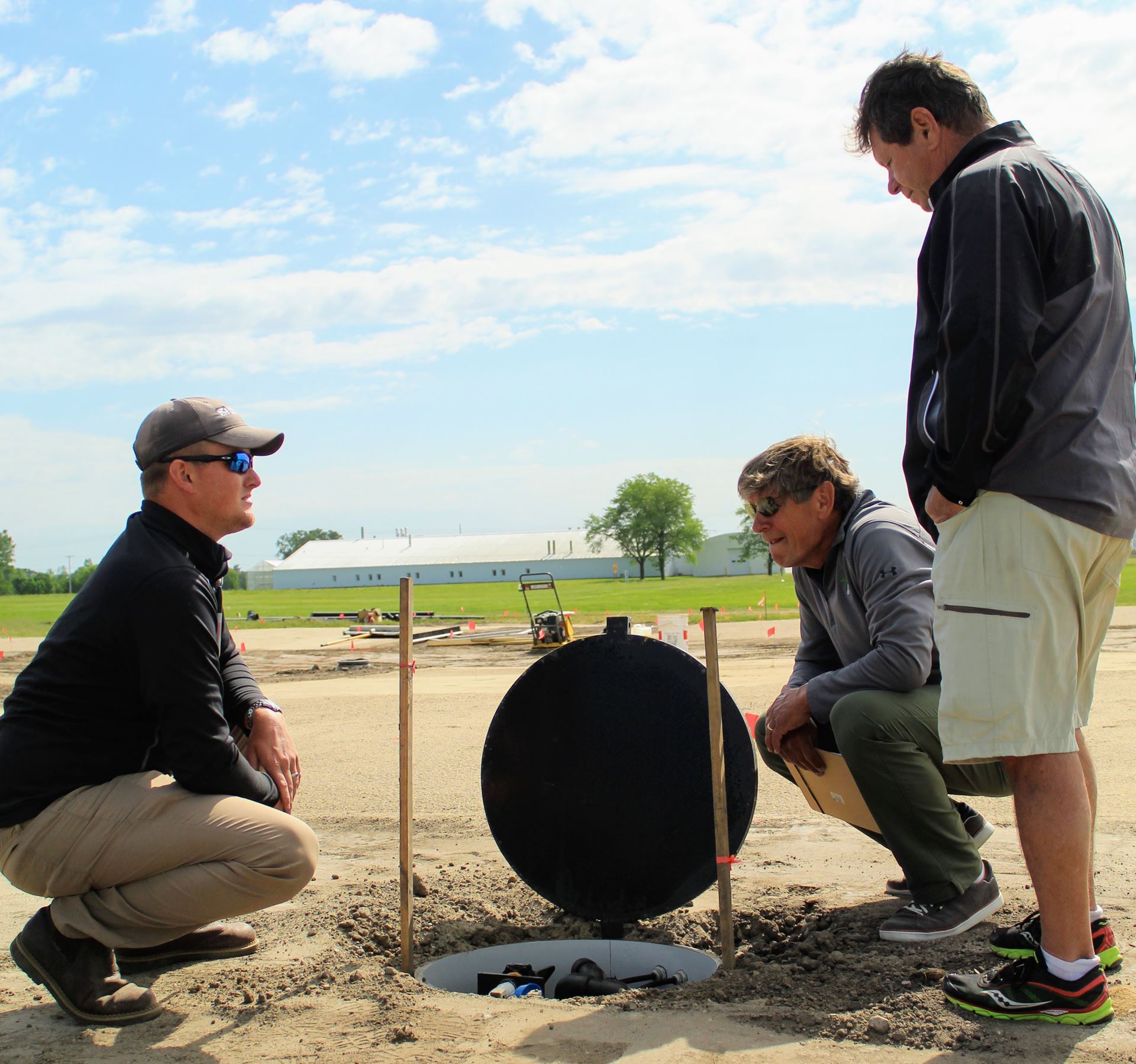
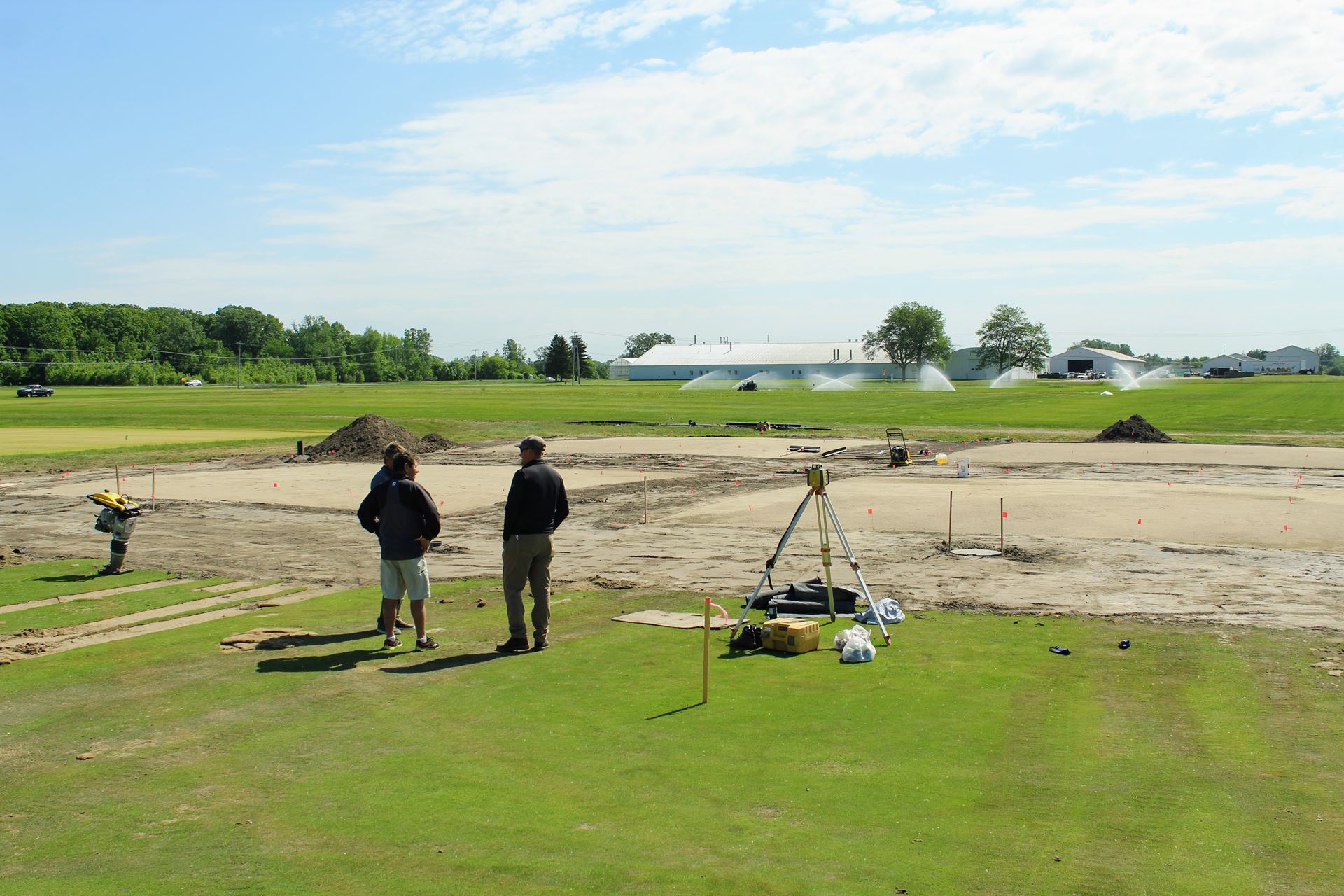

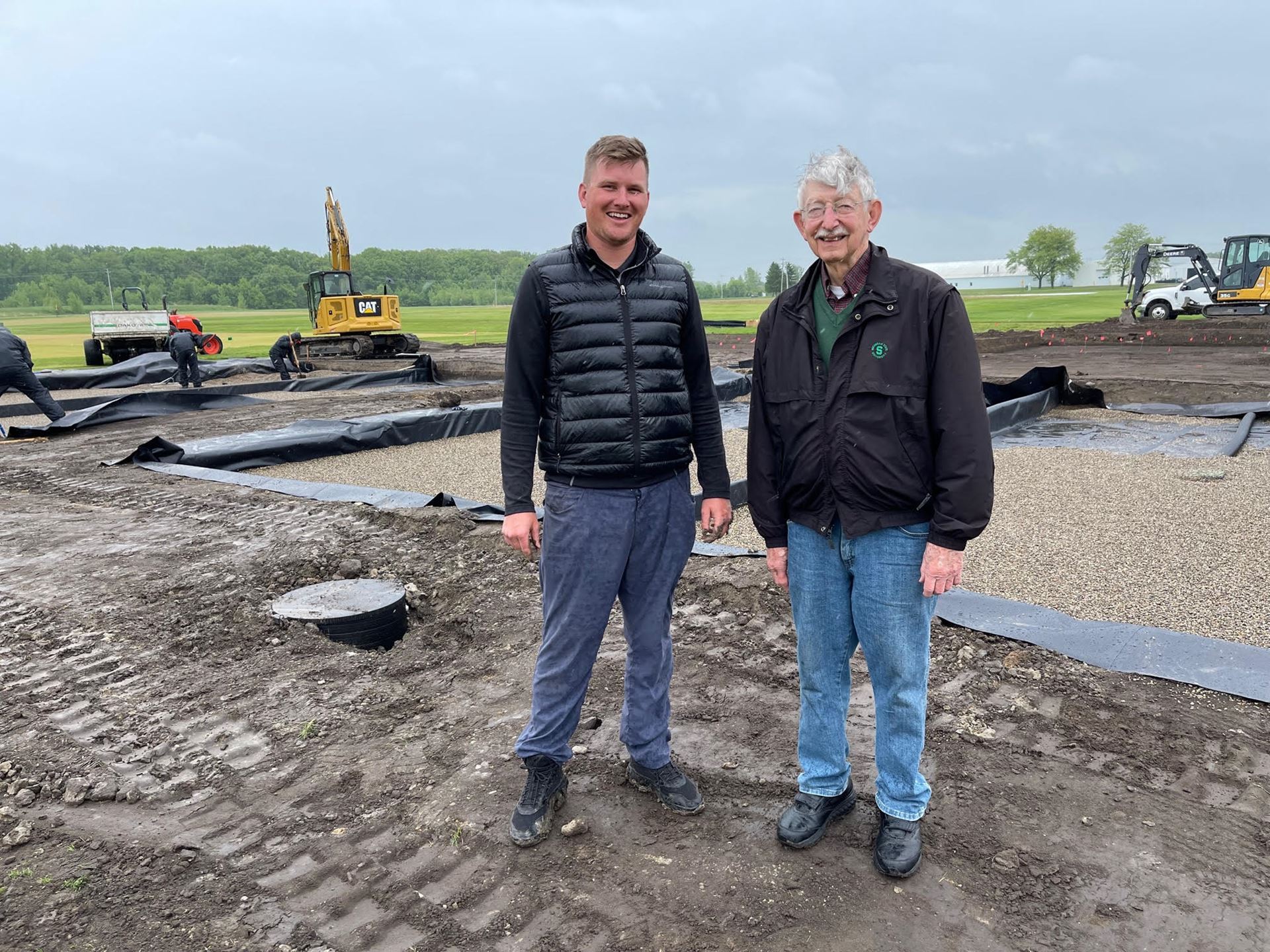
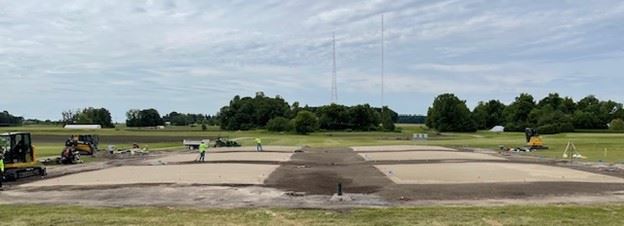
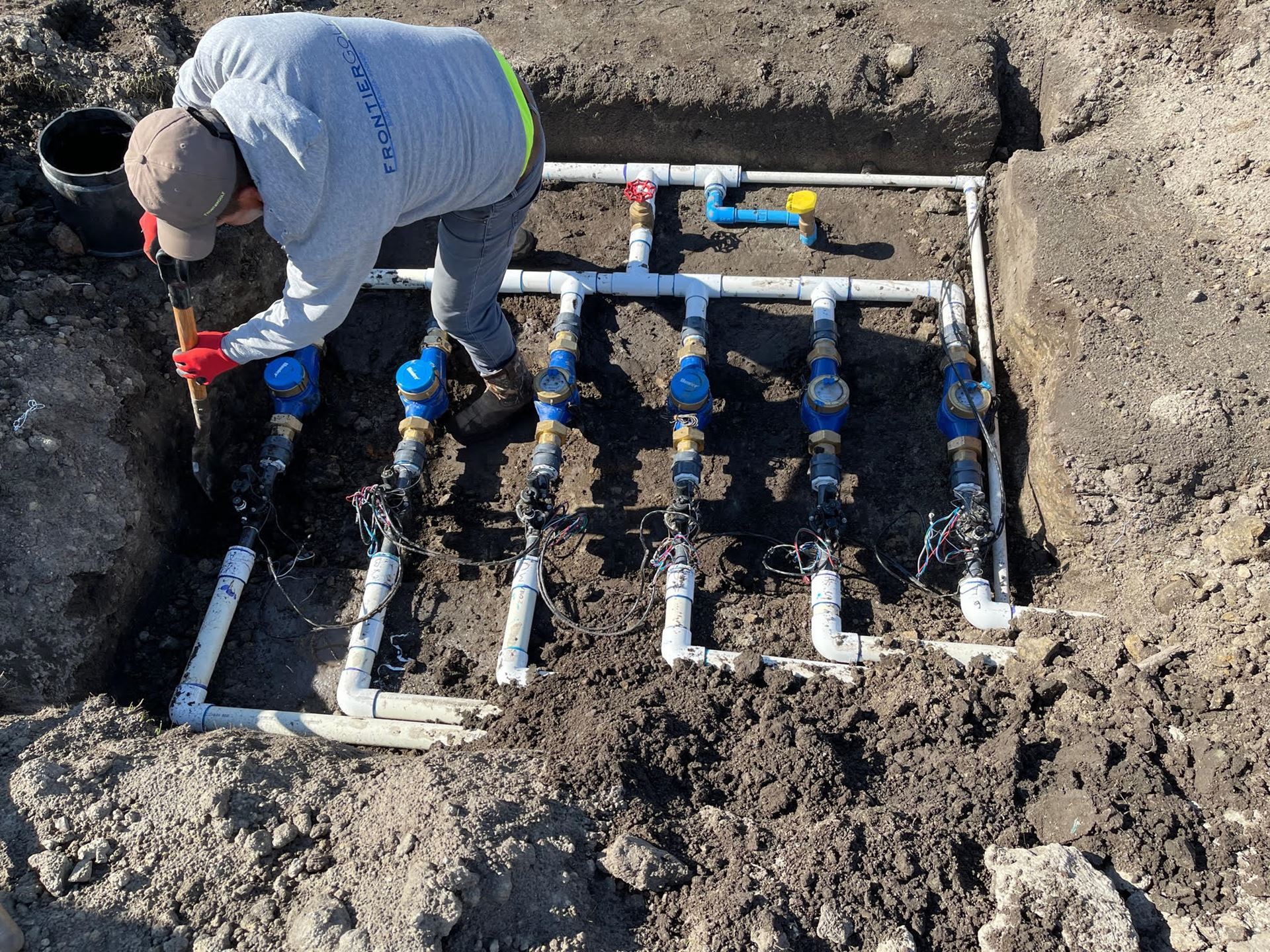
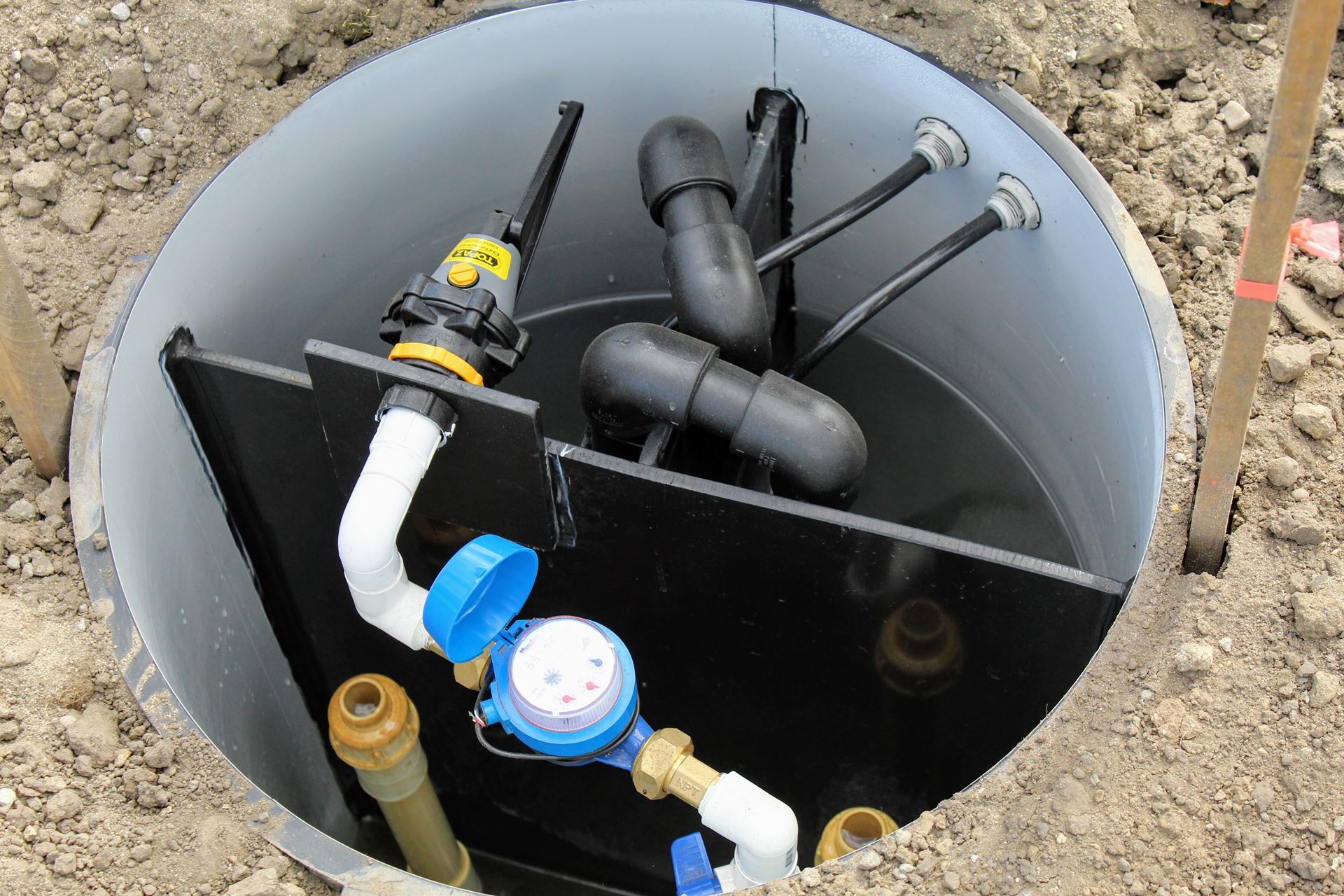
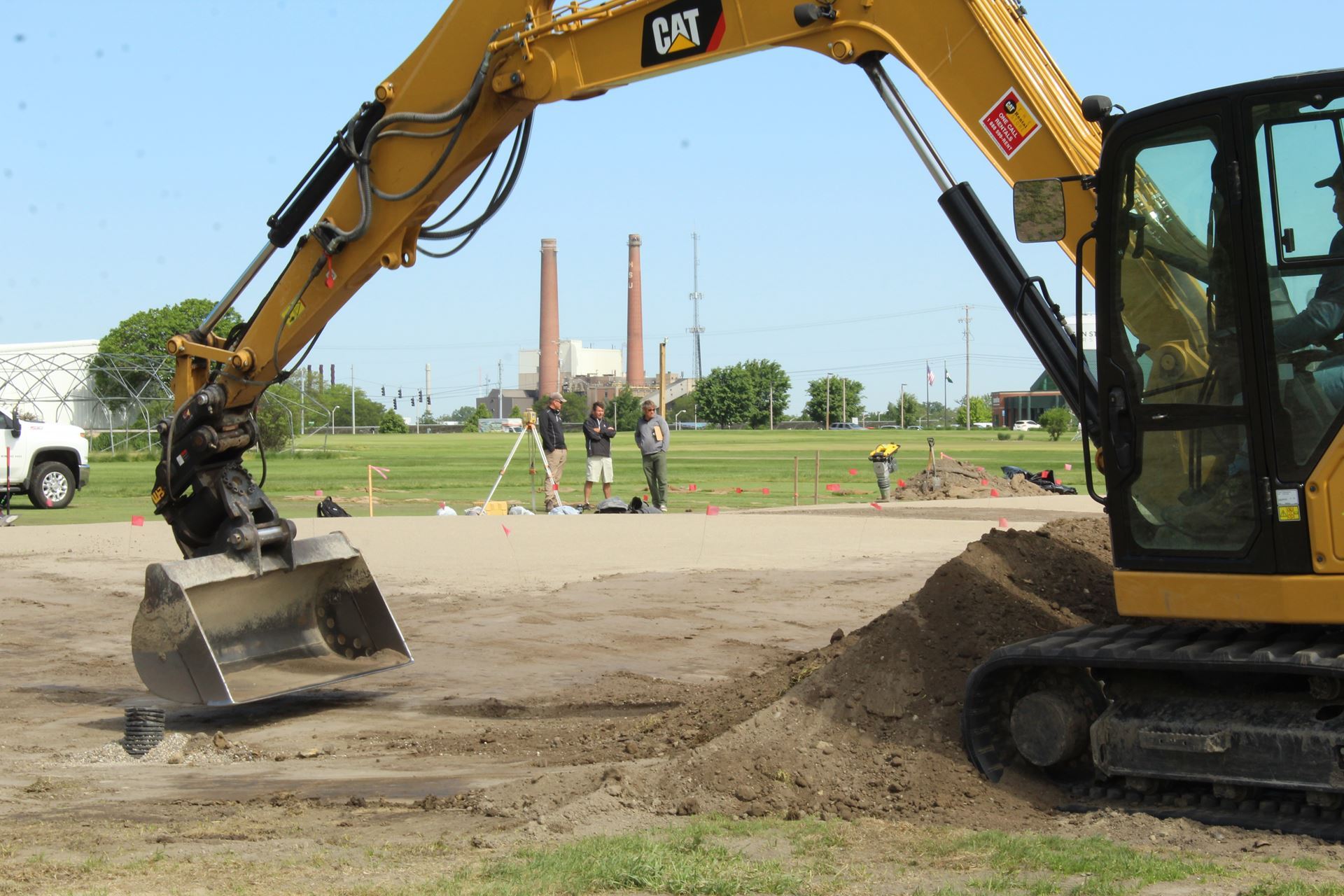
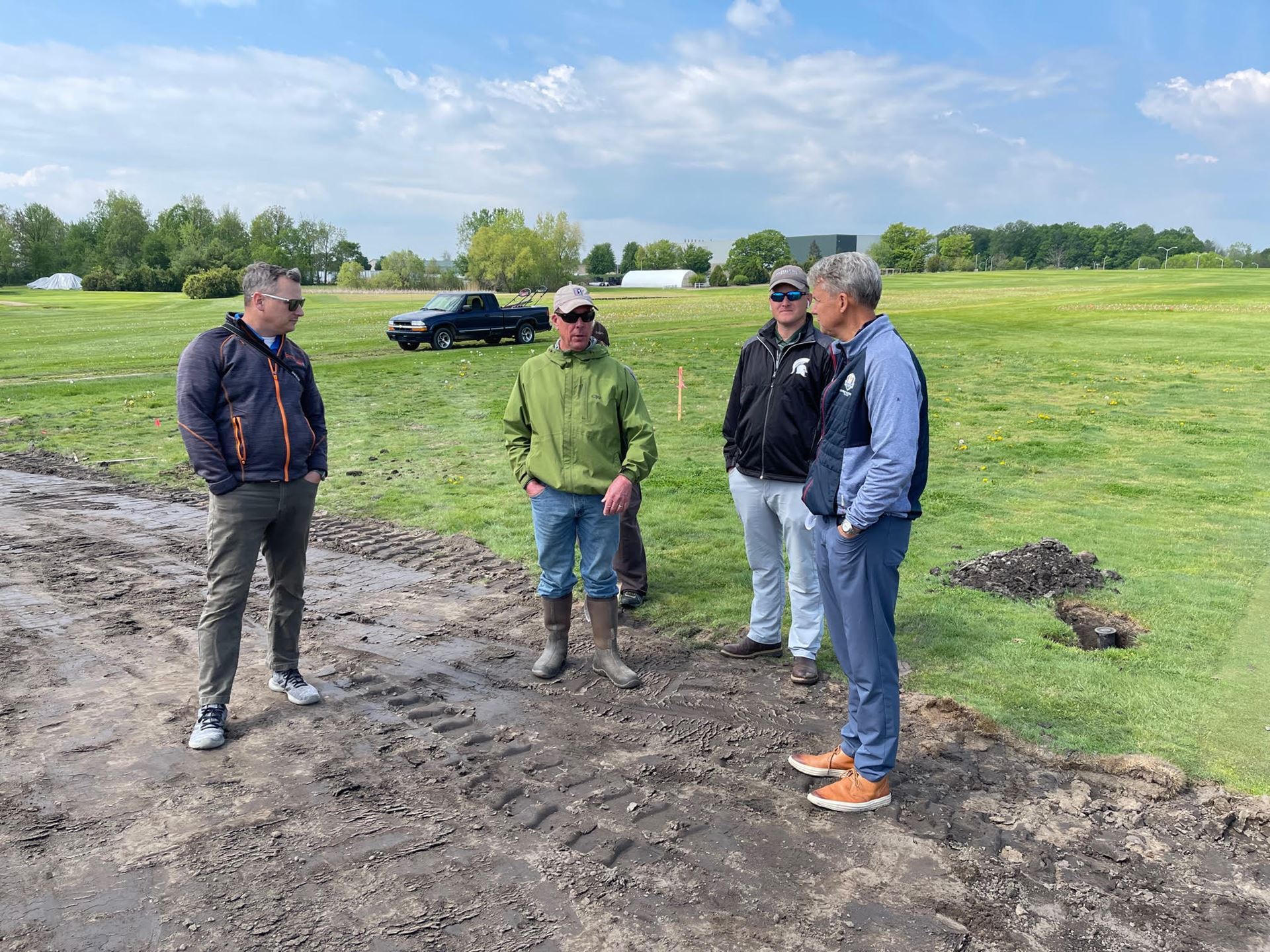
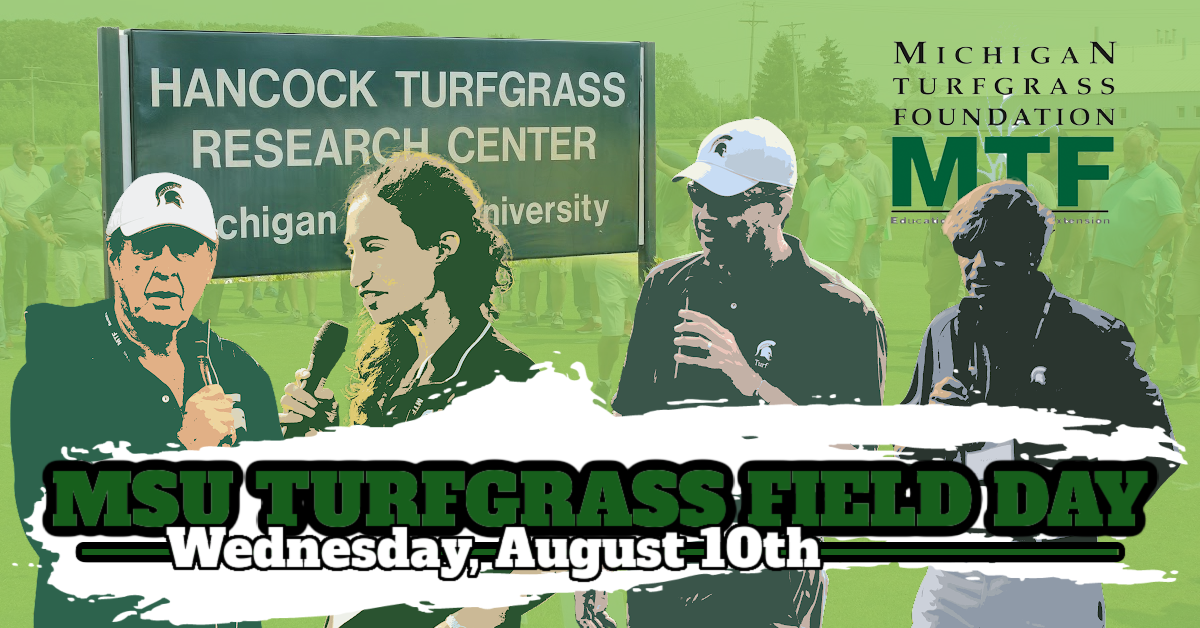

%20(1).png)